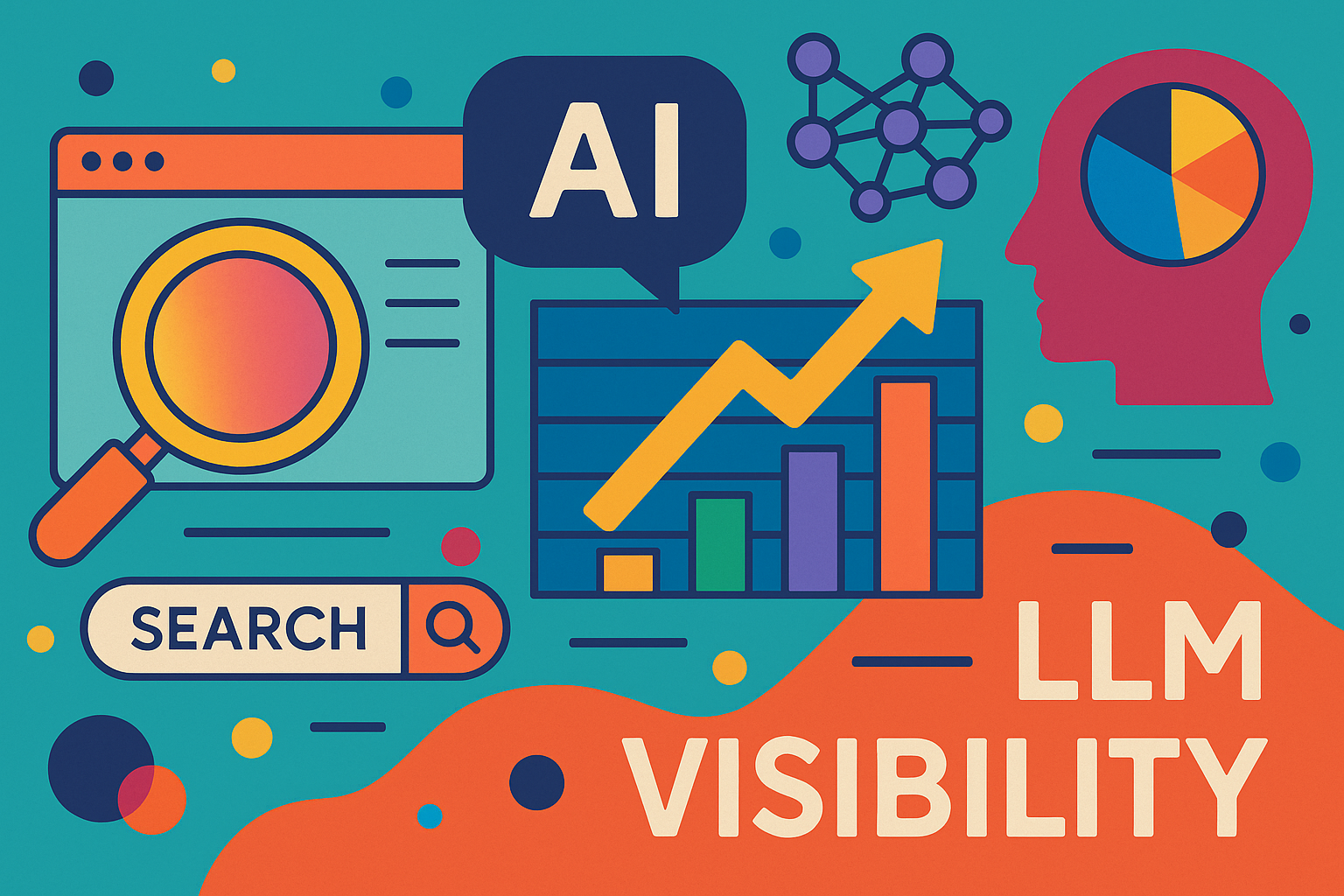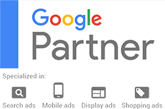AI tools like ChatGPT, Claude, and Perplexity are becoming more than just novelties - they’re now key platforms people use to get information, make decisions, and choose what businesses to engage with.
But here’s the challenge: if your brand isn’t showing up in these AI-generated answers, you’re invisible to a growing portion of your potential audience.
Welcome to the world of LLM visibility.
In this guide, we’ll break down what LLM visibility is, how it works, why it matters for your business, and how to start showing up in AI-powered search responses.
What Is LLM Visibility?
LLM visibility refers to how often your business or content is mentioned, cited, or included in responses generated by large language models (LLMs) - the AI systems behind tools like ChatGPT, Google’s AI Overviews, Claude, Perplexity, and others.
This kind of visibility doesn’t always lead to a direct website click. In many cases, the mention alone is the win. Your brand gets seen, trusted, and remembered—even if the user doesn’t immediately land on your site.
For businesses, this is a new frontier of digital visibility - complementing, not replacing, traditional search engine optimization (SEO).
Why LLM Visibility Matters for Your Business
Search behavior is shifting. While traditional Google searches still dominate, AI search is quickly catching up.
Recent studies show that a growing number of users are turning to AI tools to get answers, discover products, and find recommendations. Some of these users never even open a browser tab - they rely on AI-generated responses alone.
If your brand isn’t appearing in those responses, you’re losing potential leads and missing out on being part of the decision-making process.
In fact, some businesses report significantly higher conversion rates from AI search referrals compared to traditional organic traffic. People who see your brand recommended by an AI are often further along in their journey - and more likely to act.
Is Traditional SEO Still Important?
Absolutely. While LLMs gather data in a different way, their outputs still depend heavily on what’s indexed and available across the internet.
Most AI systems use a technique called retrieval-augmented generation. That means they pull from real-time web sources - often the same ones used by search engines - to craft answers.
So, the better your content performs in traditional search, the more likely it is to be included in AI responses. SEO remains the foundation, but now there’s an added layer: optimizing your content and brand for AI visibility.
How to Improve Your LLM Visibility
There’s no guaranteed formula - but there are strategic actions you can take that align with how these systems gather and evaluate information.
Here are the most effective areas to focus on:
1. Increase High-Quality Off-Site Mentions
One of the strongest predictors of LLM citations is how often your brand is mentioned across the web - especially in trusted third-party sources.
This isn’t about spamming forums or stuffing backlinks. It’s about getting mentioned in places that AI tools treat as authoritative. That might include community Q&A sites, review platforms, or widely-read blogs.
For example, if your wellness brand is frequently mentioned in thoughtful answers on Quora, cited in comparison posts on health blogs, and reviewed on third-party platforms, AI tools are more likely to include you in their responses when someone asks about top wellness brands or products.
Prioritize earned media and reviews. Show up where your audience already talks, and make sure they’re talking about you.
2. Create the Right Types of Content
Some content formats are more likely to get picked up by AI tools than others.
Long-form educational content, product comparisons, and clear “best of” style content tend to do well. AI tools often try to summarize or compile information for users, and these content types give them exactly what they need.
Pages like “Top 5 Commercial Roofing Materials Compared,” or “Best Local Accounting Software for Small Businesses,” provide structure and clarity that AI tools can easily interpret and cite.
It’s also helpful to keep content up to date. AI systems show a preference for fresh sources when dealing with rapidly evolving topics.
3. Make Your Writing Clear and Direct
AI tools respond best to content that gets to the point.
Use clear, declarative language. Avoid burying your main ideas. For example, instead of writing “Some people believe X might be helpful,” say “X is one of the most effective methods for solving Y.”
Also, include relevant terms and topics naturally throughout your content. If your page is about home solar panels, mention related terms like battery storage, grid tie-in, installation time, and warranty length. This gives the AI more context to understand what your page is truly about.
Structure your content with headings, summaries, and plain language so it’s easily interpreted by both humans and machines.
4. Watch for AI Traffic That Leads to 404s
Sometimes AI tools hallucinate URLs. That means they generate links to pages that don’t actually exist - but should.
Let’s say your company writes extensively about digital signage but doesn’t have a page called /digital-signage-services. If that’s a URL AI tools frequently generate and people are clicking it, you’re missing out.
Review your analytics for repeat 404s and redirect those visits to relevant, real pages. This is one of the simplest ways to capture traffic that would otherwise be lost.
5. Fill Gaps in Your Brand’s Topic Associations
LLMs form an understanding of your brand based on context - what topics, industries, and phrases frequently appear near your brand name.
If your competitors are being cited for topics you want to own, but you’re not showing up, it’s likely because you haven’t published content that connects your brand to those ideas.
The solution? Create content that associates your business with those topics, both on your site and through guest posts, partnerships, or community engagement.
For example, if your tech company wants to be included in AI-related product roundups, start creating content that explores your tools in the context of AI innovation.
6. Avoid Overreliance on JavaScript
Many AI crawlers currently have limited ability to render JavaScript-heavy pages. That means if your most important content is hidden behind JavaScript-based navigation or content loading, it may not be seen or cited.
Where possible, ensure that core content is easily accessible in standard HTML, and that your most valuable pages aren’t buried in layers of dynamic rendering.
7. Stay Human: Don’t Spam AI
The rise of AI-generated content has led some businesses to produce huge volumes of generic pages in hopes of being indexed and cited.
But AI systems are getting smarter, and this approach is unlikely to work long-term. Worse, it can damage your credibility if users do land on thin or low-quality content.
Instead of churning out content for every possible keyword, focus on thoughtful, helpful, well-written material that speaks directly to your audience.
AI tools are looking for trustworthy sources - and your customers are too.
LLM Visibility Is the Next Frontier
Search engines aren’t going away - but AI tools are clearly changing how people find information, products, and services.
The brands that succeed in this new landscape will be those that invest in being helpful, authoritative, and ever-present - both in traditional search results and AI-generated answers.
LLM visibility isn’t about tricking a machine. It’s about making your business easier to understand, more connected across the web, and more likely to be chosen when the digital assistant answers, “Here’s what I found.”
If you’re ready to start optimizing your business for AI search tools, Theia Media is here to guide the way.









